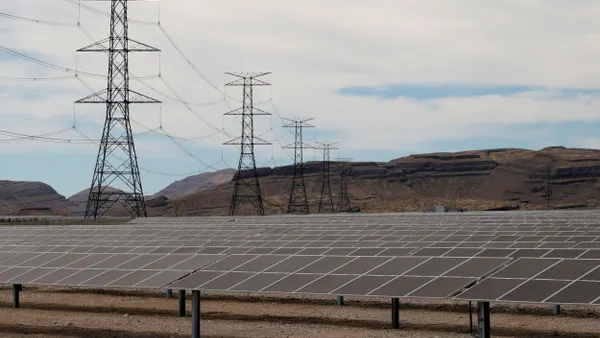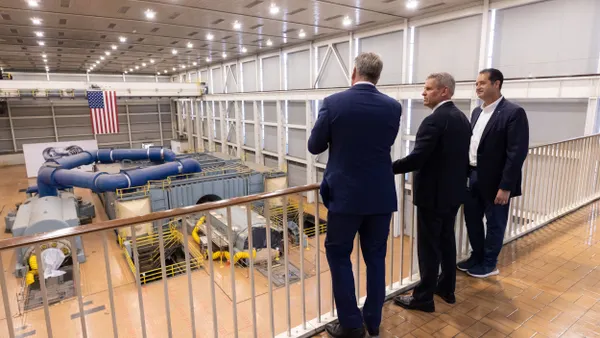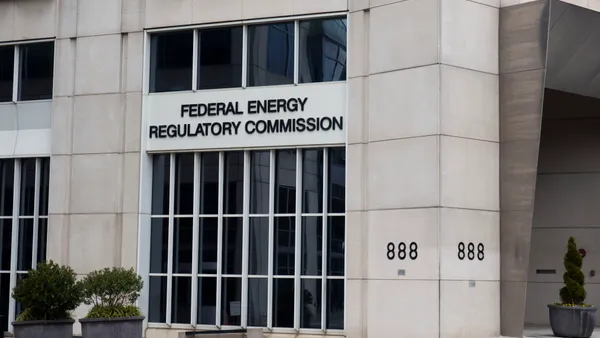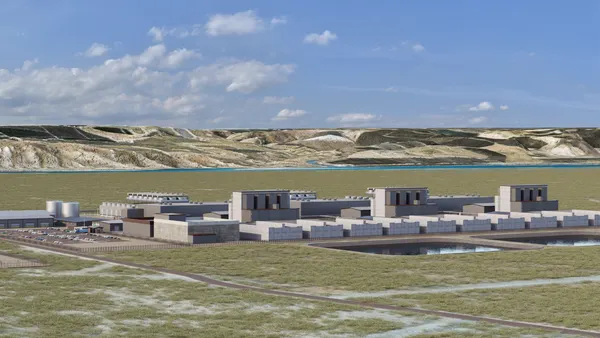Dive Brief:
- Consumer and clean energy advocates say high rates of return on new interstate pipelines have led to a slew of unnecessary capacity proposals, including several which are now before the Federal Energy Regulatory Commission.
- A new report from Oil Change International, the Sierra Club and Public Citizen notes that pipelines already approved or pending before federal regulators this year could add more than 2,400 new miles of pipeline.
- Returns on pipeline investments can be as much as 40% higher than on other utility projects, the report notes, driving more companies to propose pipelines that the clean energy groups say are unnecessary.
Dive Insight:
Clean energy supporters have argued for some time that additional gas pipeines are unnecessary, while utilities argue additional transport is capacity to ensure reliable service, low prices and integrate more renewables.
As that debate continues, Oil Change International's new report argues that pipeline proposals continue to pile up because the rate of return is so lucrative.
FERC allows a return on equity of 14% for new interstate gas pipelines, a rate set in 1997 when interests rates were much higher than they are today.
"This comparatively high return provides an incentive for utility holding companies and gas producers to enter into the pipeline business, especially as utilities face stagnant or declining revenues from electricity sales," the report concluded. "It also incentivizes the building of new infrastructure over the efficient use of existing pipelines, which have been paid off by previous ratepayers."
The return on pipeline investments is about 40% higher than for other utility-type spending, the report noted.
Warnings against pipeline overcapacity have gained traction in the Northeast, where the Massachusetts Attorney General Maura Healey has questioned utility assessments of pipeline need.
A report in Platts' Gas Daily appears to support the argument. The outlet reported this week that planned pipeline capacity will add 17 Bcf/d to the Northeast by 2020, but gas demand is only expected to increase 2 Bcf/d.
"FERC must overhaul its pipeline permitting process to protect the interests of U.S .consumers from the profit motives of pipeline developers," the Oil Change report concluded.
Oil Change made several suggestions, including that FERC stop using precedent agreements as evidence of a need for new capacity, "especially when contracts are between affiliated companies and involve captive utility customers."
The report also called for an evidentiary process to be used in assessing pipelines, a reduction in the return on equity, and a thorough and independent assessment of market needs for new projects.
FERC, which had been shorthanded for months, now has three members to field a quorum and has begun approve pipelines which had been backlogged.
Last month, federal regulators approved the NEXUS Gas Transmission project, a 250-mile gas pipeline that will transport Appalachian shale gas from receipt points in eastern Ohio to existing pipeline system interconnects in southeastern Michigan. The Atlantic Coast Pipeline, a 600-mile project that would carry fracked natural gas from West Virginia into North Carolina and Virginia, is expected to be approved soon.














